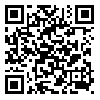Volume 21, Issue 81 (8-2021)
refahj 2021, 21(81): 51-85 |
Back to browse issues page
Abstract: (8378 Views)
Intorduction: The major focus of this research is on studying protection behavior with emphasis on the role of components of protection motivation theory.
Method: This research study is based on the survey method, which has been conducted using a researcher-made questionnaire. The statistical population of the study was all rural residents of Mazandaran province, comprising 338 individuals who were selected using simple random sampling method as a statistical. The reliability of the instrument has been confirmed using Cronbach’s alpha coefficient for protection behavior (0.752) and threat and response evaluation (0.780).
Findings: Findings showed that the average personal protection behavior (3.97) was obtained from 5. The results of the hypothesis test also showed that there is a positive and significant relationship between the components of protection motivation theory (perceived risk intensity, perceived vulnerability intensity, response costs, response self-efficacy, and response effectiveness) with personal protection behavior. Also, the results of regression indicate that a total of 0.529% of the changes in the dependent variable can be explained through the above-mentioned variables. In addition, the results of structural equation model analysis showed that the components of motivation protection theory (perceived vulnerability severity, response costs, response self-efficacy, and response effectiveness) had a direct and significant impact on respondents’ personal protection behavior while facing Covid-19 disease.
Discussion: The results of the study showed that protection motivation theory and its components could explain a social problem such as Corona virus pandemic logically and practicably and as such it can be said that this theory can be useful as a model for similar research in other rural areas of the country.
Method: This research study is based on the survey method, which has been conducted using a researcher-made questionnaire. The statistical population of the study was all rural residents of Mazandaran province, comprising 338 individuals who were selected using simple random sampling method as a statistical. The reliability of the instrument has been confirmed using Cronbach’s alpha coefficient for protection behavior (0.752) and threat and response evaluation (0.780).
Findings: Findings showed that the average personal protection behavior (3.97) was obtained from 5. The results of the hypothesis test also showed that there is a positive and significant relationship between the components of protection motivation theory (perceived risk intensity, perceived vulnerability intensity, response costs, response self-efficacy, and response effectiveness) with personal protection behavior. Also, the results of regression indicate that a total of 0.529% of the changes in the dependent variable can be explained through the above-mentioned variables. In addition, the results of structural equation model analysis showed that the components of motivation protection theory (perceived vulnerability severity, response costs, response self-efficacy, and response effectiveness) had a direct and significant impact on respondents’ personal protection behavior while facing Covid-19 disease.
Discussion: The results of the study showed that protection motivation theory and its components could explain a social problem such as Corona virus pandemic logically and practicably and as such it can be said that this theory can be useful as a model for similar research in other rural areas of the country.
Type of Study: orginal |
Received: 2020/10/23 | Accepted: 2021/02/15 | Published: 2021/09/14
Received: 2020/10/23 | Accepted: 2021/02/15 | Published: 2021/09/14
| Rights and permissions | |
 |
This work is licensed under a Creative Commons Attribution-NonCommercial 4.0 International License. |




